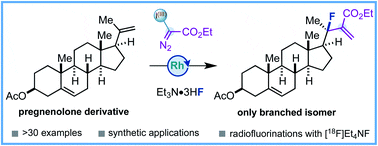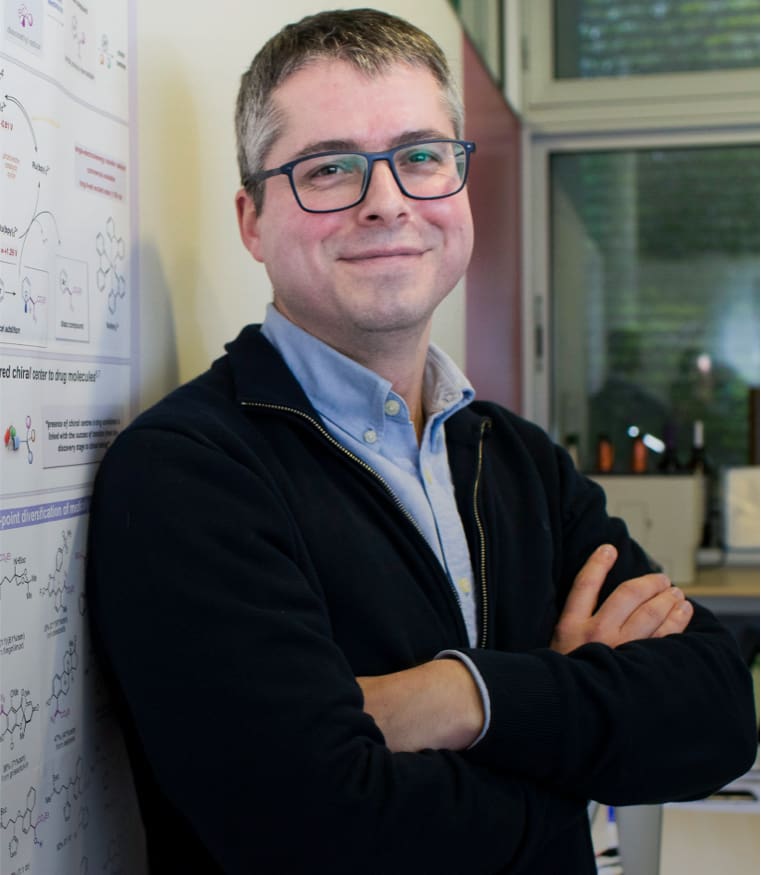Catalytic alkene skeletal modification for the construction of fluorinated tertiary stereocenters
Herein we describe the first construction of fluorinated tertiary stereocenters based on an alkene C( sp 2 )–C( sp 2 ) bond cleavage. The new process, that takes advantage of a Rh-catalyzed carbyne transfer, relies on a branched-selective fluorination of tertiary allyl cations and is distinguished by a wide scope, late-stage applications and adaptability to radiofluorination.

Jiang, L.; Sarró, P.; Jie Teo, W.; Llop, J.; Suero, M. G.
Chem. Sci. 2022, 13, 4327-4333
DOI:
10.1039/D2SC00968D

Let's create a brighter future
Join our team to work with renowned researchers, tackle groundbreaking
projects and contribute to meaningful scientific advancements




















